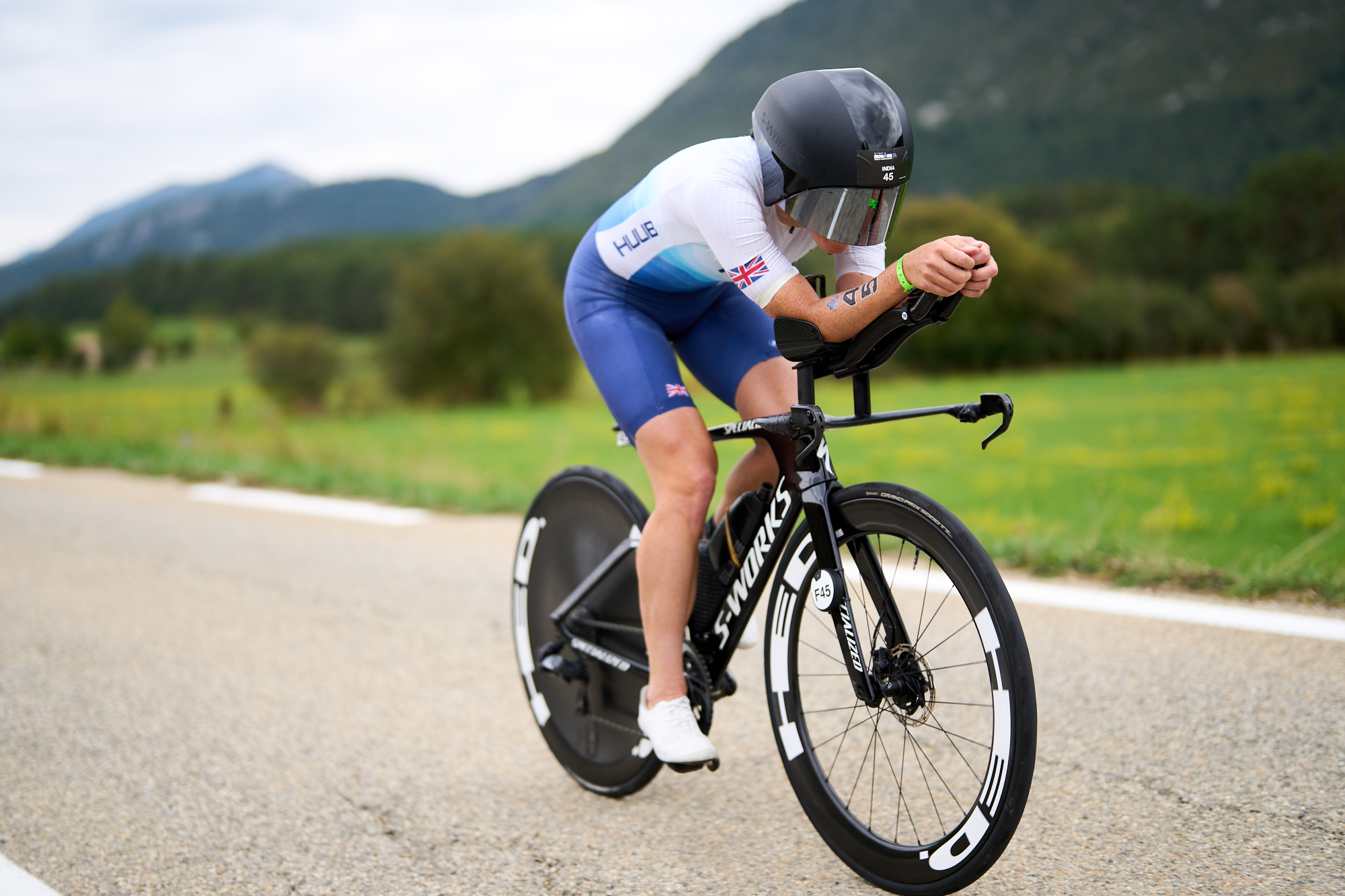Originally published at: Part One: Unlocking Speed on the Bike - Slowtwitch News
When I present on time trial (TT) bike fitting, I always start with a simple question:
“If I gave you a hat or visor to run in that would save you 45 seconds per mile, would you wear it?”
The answer, obviously, is YES!
While gaining “free speed” in running is rare (super shoes)—this is not the case for cycling. And, by “free” I don’t mean monetarily free, but free in a sense that by optimizing your bike position, equipment, and nutrition setup, you can ride faster without an increase in form or fitness.

Why Free Speed Matters
In a triathlon, over half of the event duration is spent on the bike. During this time, roughly 80% of our energy is used to overcome fast-moving air, road friction, and other resistive forces. Most of this resistance comes from the rider’s body and the reason we fold ourselves over into the time trial (TT) position—to reduce aerodynamic drag, achieving the most speed for a given effort.
Understanding this concept has shifted the conversation away from the once-polarizing debate of training more vs. buying fancy aero equipment. Today, serious athletes know they need to check all the boxes: proper training, race execution, bike position, and equipment.
Buying a set of fast tires doesn’t mean you can take the week off from training. However, by optimizing your bike position and setup, you can significantly boost your performance—without additional fitness gains.
The Three Pillars of Speed
Achieving free speed rests on three foundational pillars:
SPEED = Comfort + Power + Aerodynamics
If these pillars sound familiar, that’s a good thing. Over 15 years ago, Todd Carver (Retul Co-founder and current Head of Performance at Specialized Bikes) and I introduced these principles during our first time-trial-specific bike fit course for Retul University. While reasonably apparent, we identified that the foundation—and ultimate goal—of the time trial position is SPEED, built on three key pillars.
Since then, these pillars have caught on, influencing the marketing and positioning of numerous products across the cycling industry. I’ve applied them with athletes ranging from recreational riders to pro tour cyclists, age-group triathletes, and world champions. Let’s break them down:
1. Comfort
The ability to sustain your position for the duration of your event.
A good TT position starts with comfort. Comfort is relative to the individual, and those new to the position may find it unnatural at first. However, the unique thing about the TT position is that it is highly adaptable.
2. Power
The ability to apply force to the pedals without restriction.
The goal is to position the rider and their contact points (saddle, bars, and pedal/shoe interface) within a range of accepted biomechanical norms to allow freedom of movement and optimize muscle function, maximizing pedaling efficiency.
While it’s difficult to objectively measure power changes during a bike fit, the goal is to give the athlete every chance at success—i.e., to apply force to the pedals.
3. Aerodynamics
Optimization of frontal surface area and shape to reduce aerodynamic drag.
Reducing aerodynamic drag is the final goal of the fit. I’ve spent hours testing athletes in wind tunnels and velodromes, and making major changes to their position to chase a lower drag number requires a delicate balance. I carefully assess the trade-offs, knowing their position is already optimized for comfort within their biomechanical limits. I ask myself, Can the athlete adapt to this change?
Often, small tweaks—like adjusting head and arm position, elbow width, or hand height—can yield significant aerodynamic gains without compromising comfort or power. Additional factors, such as helmet selection and bottle placement, also play critical roles.
Bringing It All Together
Optimizing these three pillars—Comfort, Power, and Aerodynamics—unlocks your potential for free speed. Each pillar supports the others, ensuring that your bike position and setup maximizes your performance.
In the next article, I’ll dive deeper into the first pillar of speed: Comfort.
Stay tuned!
—Mat